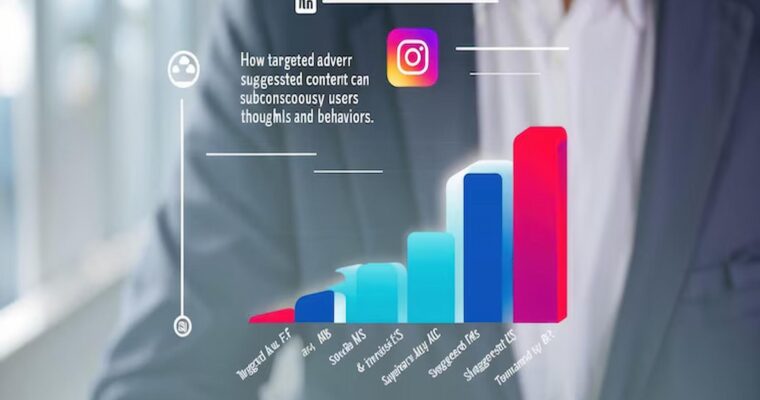Instagram has become more than just a platform for sharing pictures and connecting with friends—it’s now a powerful tool for marketing, brand building, and customer engagement. With over a billion users, it’s a goldmine for those who can leverage it. But how do you make sure your efforts on Instagram pay off? The secret lies in understanding and utilizing analytics to maximize your performance. This article will dive into how effective analytics strategies can boost your Instagram success, providing clear guidance and actionable steps.
Why Instagram Analytics Matter
Understanding your Instagram performance is crucial to making informed decisions. It’s not just about tracking the number of likes or followers. Real growth comes from understanding how your content resonates with your audience, the impact it creates, and how you can optimise future posts. Analytics provide insights into what’s working and what’s not, allowing you to tweak your strategy for better results.
You gain a comprehensive view of your Instagram presence by diving deeper into metrics such as reach, impressions, engagement rate, and demographics. This is where Instagram analysis comes into play—a process that involves a detailed study of these metrics to uncover actionable trends and opportunities. Let’s explore some key strategies to analyse and enhance your Instagram performance.
Setting Clear Goals for Your Instagram Strategy
Define Your Purpose
Before diving into analytics, it’s vital to establish clear goals. Are you trying to build brand awareness, drive traffic to your website, increase sales, or foster community engagement? Each goal demands different approaches to content creation and promotion.
Key Performance Indicators (KPIs)
Identify the KPIs that align with your goals. For example:
- Brand Awareness: Focus on metrics like reach, impressions, and follower growth.
- Engagement: Track likes, comments, shares, saves, and story interactions.
- Sales & Conversions: Monitor clicks on call-to-action buttons, website traffic from Instagram, and purchase conversions.
Establishing KPIs allows you to concentrate on relevant metrics and ignore those that don’t contribute to your goals.
Analysing Your Audience: Get to Know Who You’re Talking To
A thorough understanding of your audience is crucial for creating content that resonates with them. Instagram’s built-in analytics tool provides detailed insights about your followers, including age, gender, location, and when they are most active. By utilizing these content keywords, you can ensure that your posts align with what your audience is searching for, increasing engagement and visibility.
Demographics Matter
Look into your audience demographics to tailor your content. For instance, if you discover that most of your followers are between 18-24 years old, you’ll want to use trends, language, and visuals that cater to this age group.
Activity Patterns
Tracking when your followers are online helps you schedule posts for maximum engagement. If your analytics show that your audience is most active on weekdays around noon, post content at that time to increase website’s visibility.
Content Analysis: What Works and What Doesn’t
The content you post plays a pivotal role in your Instagram success. Through content analysis, you can identify patterns and understand what types of posts drive the most engagement.
Different Types of Content
Instagram offers various content formats—feed posts, stories, reels, and IGTV. Each type serves a different purpose and caters to different audience preferences. Utilize analytics to determine which type of content works best for you. For instance:
- Feed Posts: Great for high-quality visuals and informative captions.
- Stories: Ideal for day-to-day updates and engaging features like polls or Q&A.
- Reels & IGTV: Excellent for more dynamic content like tutorials, behind-the-scenes footage, or trending challenges.
Test and Compare
Experiment with different content types, formats, and themes. Track their performance and compare which ones get the most likes, comments, shares, and saves. Use this data to optimise your content strategy moving forward.
Engagement Tracking: Beyond the Likes
Likes are often seen as the primary measure of success on Instagram, but they don’t tell the full story. Engagement includes likes, comments, shares, saves, and even direct messages that your content prompts.
Tracking Comments and Shares
Comments often indicate how your audience feels about your content. Engage with commenters to foster community. Shares are also important because they help spread your content beyond your followers and introduce new potential audiences to your profile.
Saves: The Hidden Gem
“Saves” are a strong indicator of valuable content. When someone saves your post, it indicates that they found it useful enough to revisit. Identifying which posts receive the most saves can help you create content that your audience finds valuable.
Hashtag Strategy: Finding the Right Tags
Hashtags are critical to growing your reach on Instagram. By analysing which hashtags attract the most engagement, you can refine your hashtag strategy for optimal results.
Branded vs. Community Hashtags
- Branded Hashtags: Create unique hashtags that are specific to your brand or campaign. This helps to build brand awareness and foster community among your followers.
- Community Hashtags: Use content keywords and hashtags that are relevant to your industry or niche to reach people who are interested in similar content. For instance, a fitness brand might use hashtags like #WorkoutMotivation or #FitLife.
Analyze Hashtag Performance
Instagram analytics tools let you see which hashtags drive the most engagement. Use this information to adjust your hashtag strategy—adding high-performing hashtags and removing those that don’t contribute significantly to your posts.
Story Insights: Make the Most of Ephemeral Content
Instagram Stories provide a unique opportunity for quick, engaging content that lasts 24 hours. Story analytics give you insights into the type of content that catches your audience’s attention quickly.
Key Metrics for Stories
- Taps Forward: How many users tapped to see the next story.
- Taps Backward: A strong indicator that users found your story engaging enough to rewatch.
- Exits: How many users exited your story altogether?
Pay attention to these metrics to understand what keeps viewers engaged and what may be causing them to drop off.
Tracking Growth: Follower Insights
Monitoring your follower growth is essential to measuring the effectiveness of your Instagram strategy. Sudden follower spikes can be attributed to particular posts, campaigns, or shoutouts, while drops might indicate something didn’t sit well with your audience.
Understand Follow-Unfollow Trends
If you notice a spike in unfollowers, analyse what content was posted around that time. Understanding why followers leave is just as important as knowing why they join. This information will guide you in creating content that retains followers and attracts new ones.
Leveraging Growth to Improve Strategy
Use follower insights to understand which content or tactics result in growth. Whether it’s a giveaway, a partnership with an influencer, or a viral post, replicating the success of these strategies can significantly boost your overall Instagram presence.
Using Analytics Tools for a Deeper Dive
While Instagram’s built-in analytics provide a basic overview, numerous third-party tools can provide a more comprehensive analysis. Tools like Iconosquare, Sprout Social, and Hootsuite allow you to track metrics over extended periods, compare performance with competitors, and access detailed insights.
Advanced Metrics
Third-party tools can help you explore more advanced metrics like:
- Optimal Posting Times: When is the best time to post based on historical performance?
- Hashtag Effectiveness: In-depth insights into how individual hashtags perform.
- Competitor Analysis: Understand how your Instagram performance compares with industry leaders.
Using such tools can help refine your strategy and enhance your Instagram performance.
Conclusion
It takes more than posting regularly to improve your Instagram performance. Planning and analysis are key. You can optimise your presence on the platform by setting clear goals, understanding your audience, analysing content performance, and utilising in-depth Instagram analysis. Whether aiming for brand awareness, engagement, or conversions, leveraging analytics can make your strategy more efficient and effective. Monitoring, adapting, and evolving as you learn what resonates with your audience is key.




